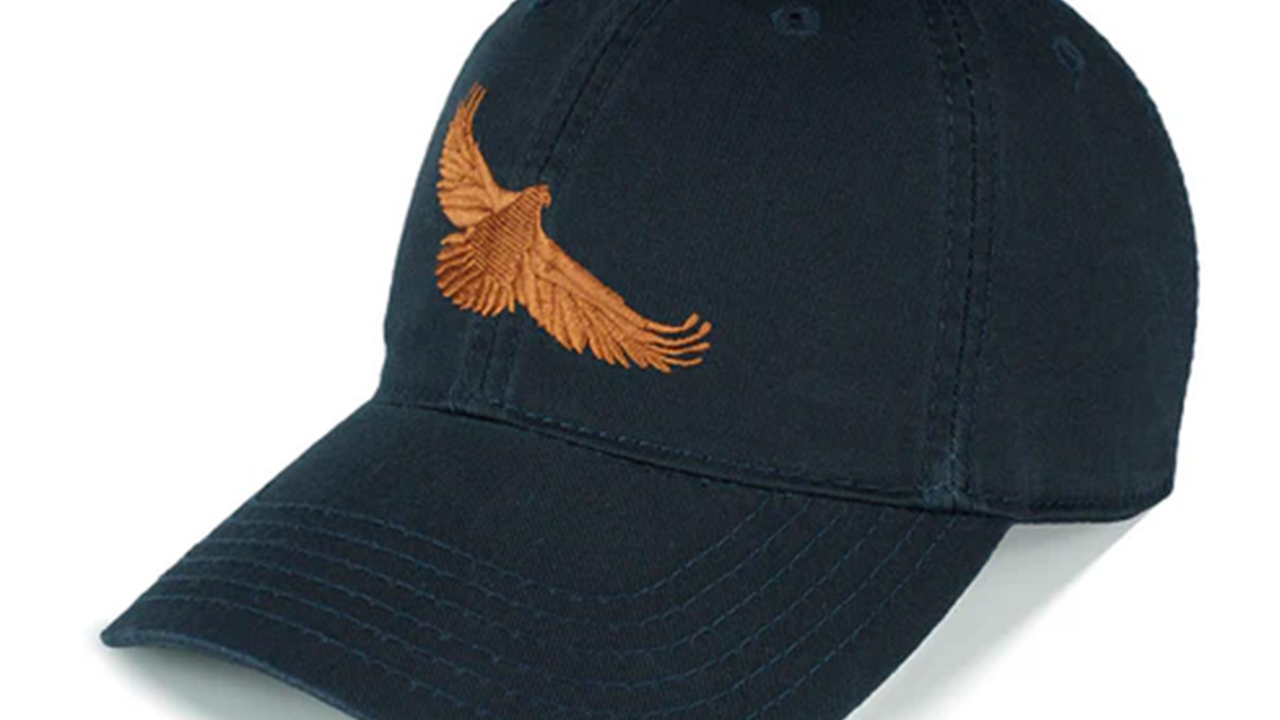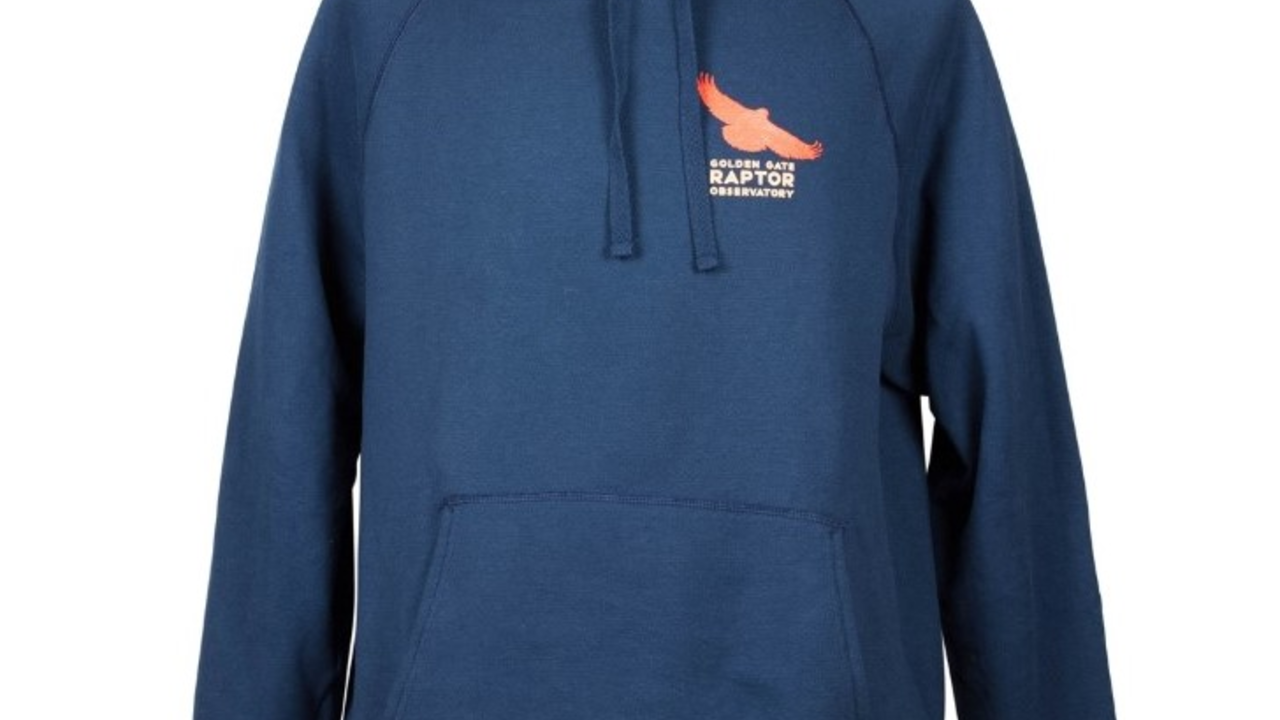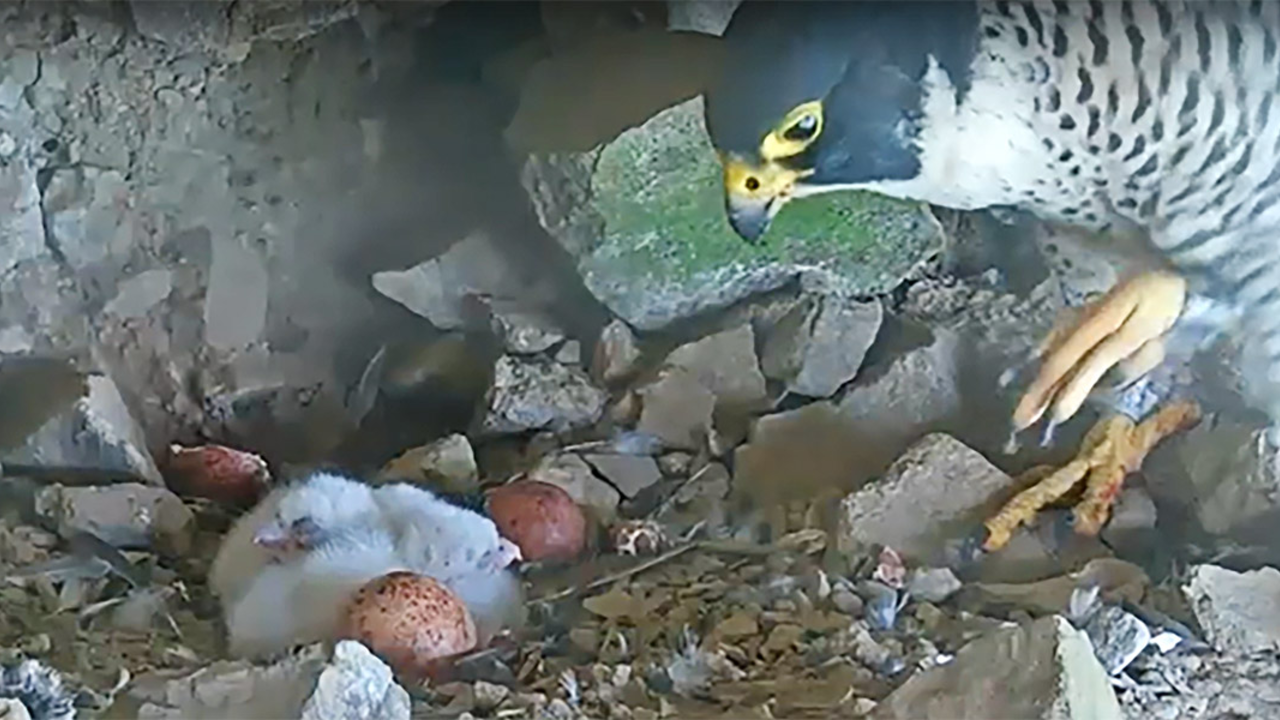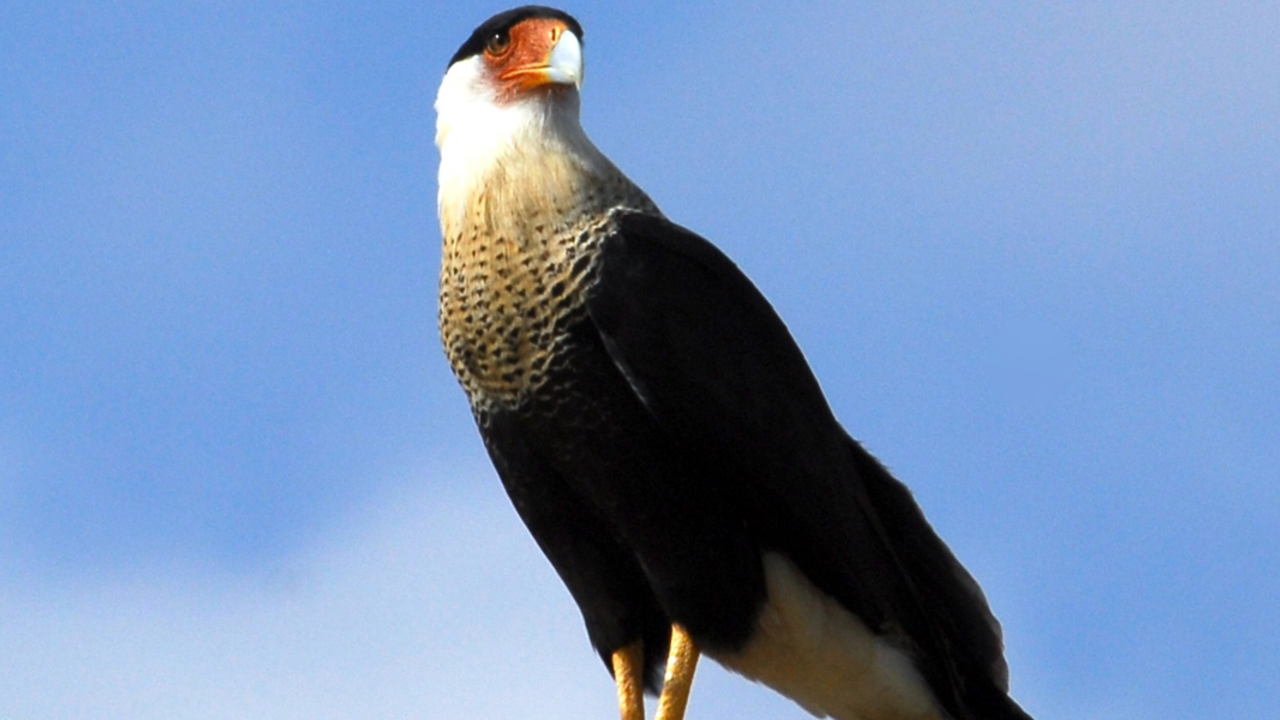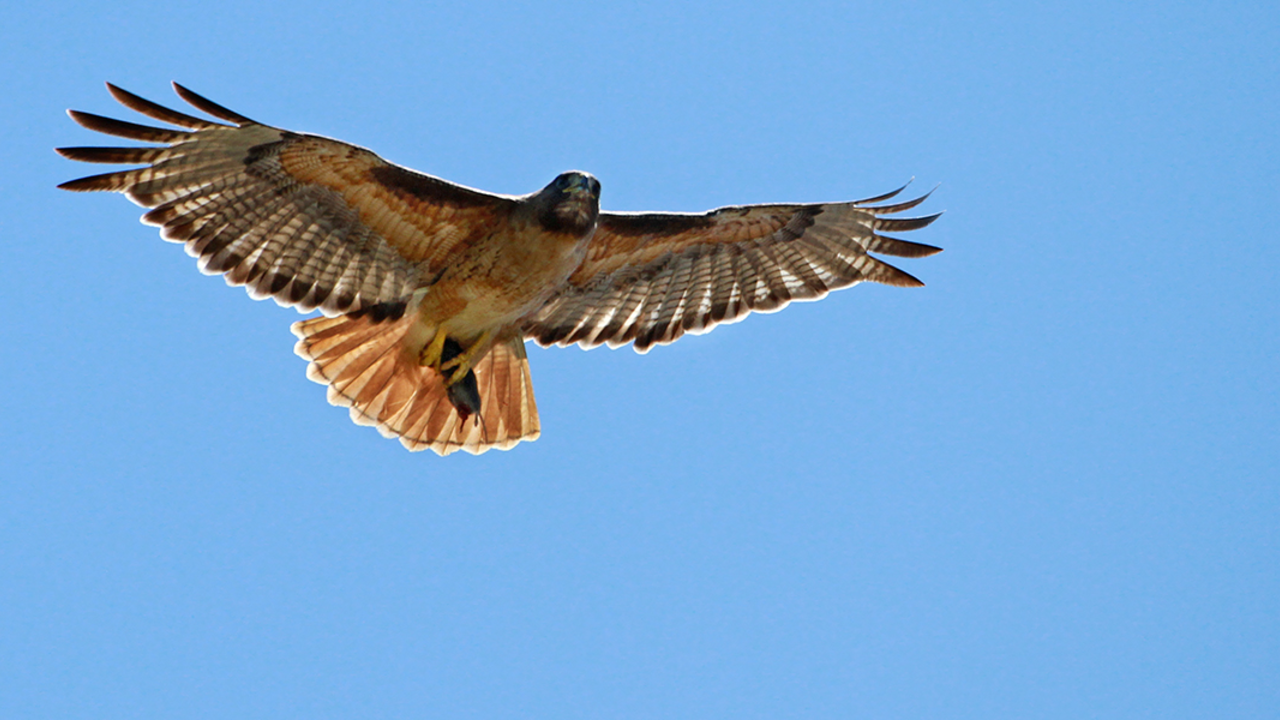Color bands on hawks: What they mean and why they matter
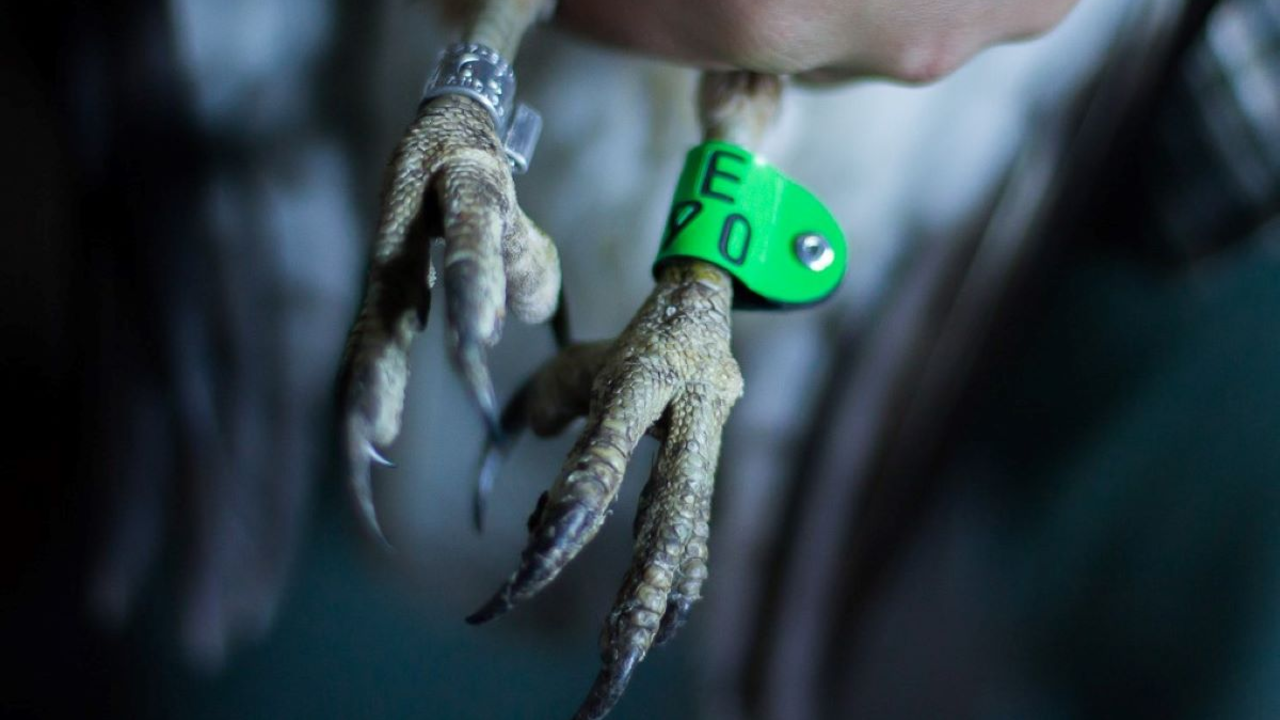
Olivia Wang / Parks Conservancy / GGRO
Red-tailed Hawks! This season was full of them. The 2018 field season ended with 342 Redtails banded—almost 100 Redtails above our 10-year average. On any given day, an observer could regularly spot 10-15 Redtails riding the wind uplift on Slacker Hill. If you were a Golden Gate Raptor Observatory (GGRO) volunteer, you might have enjoyed this sight from Hawk Hill, or maybe you shook your fist in the air at them from a blind as they took turns stooping on each other in the wind.
In 2018, 197 of these Redtails received a color band along with the federal metal band. That is almost twice as many color bands as we put out in 2017. One of the reasons for this increase, besides the large number of Redtails moving through the Marin Headlands, was the focus on teaching all GGRO site leaders how to place color bands on birds.
In 2013, Chris Briggs started a two-year pilot study to examine the efficacy of using color bands on two species of hawks: Red-tailed Hawks and Cooper's Hawks. The goal was to increase the recovery rate of banded birds, and to spur public interest in our local raptor populations. Color bands are easier to read than the metal bands, which increases the potential for information return.
Color bands, also known as auxiliary markers, are usually made from plastic or metal and placed on the leg opposite the one that receives the aluminum USGS band. GGRO coordinates with California Department of Fish and Wildlife (CDFW) and other raptor researchers in California to determine a researcher-specific color and alphanumeric code. The goal is to avoid duplicating work by our colleagues across the state and to reduce the disturbance to the raptor. For our programs' research, Redtails receive either a green with black code or lavender with white code color band, and Cooper's Hawks receive a green color band. This means that a Red-tailed Hawk or Cooper's Hawk encountered in California wearing one of these specific color bands was banded by GGRO volunteers during fall migration.
| YEAR | COLOR-BANDED RED-TAILED HAWKS |
| 2013 | 80 |
| 2014 | 51 |
| 2015 | 102 |
| 2016 | 17 |
| 2017 | 100 |
| 2018 | 197 |
| TOTAL | 547 |
A common question I get after explaining the benefits of color bands is: "Why don't you just use color bands instead of the metal bands? Sounds like you only need color bands."
The metal bands we use at GGRO are issued by the Bird Banding Laboratory (BBL), which is part of the US Geological Survey (USGS). BBL is a scientific government agency, established in 1920, that supports the collection, archiving, management, and distribution of information from banded birds in North America. BBL manages more than 77 million archived banding records and more than 5 million encounter records. Each metal band receives a unique eight or nine-digit code-like a social security number, but for a bird. When it comes down to it, the metal bands issued by BBL are more important because they help us track birds banded all over North America through time, using a system common to all North American researchers, with the data collected and stored in a central location. The metal bands are more durable, whereas a color band can degrade over time and break off.
* Multiple sightings/encounters of the same bird were removed. The data reflected here use the sampling date. We wanted to compare sampling methods: pre- and post-color banding years. We realize that sampling year and recovery years will vary, and further analysis is beyond the scope of this article. Slight imperfections in math due to minor errors in recovery database need to be addressed.
| TOTAL BANDED | RECOVERED / ENCOUNTERED* (DEAD OR ALIVE) | RECOVERY / ENCOUNTER RATE | |
| All Redtails banded (metal band only, or metal and color-banded) between 1983-2018 | 10324 | 752 | 7% |
| 1983-2012 all Redtails banded before color-banding started | 8629 | 617 | 7% |
| 2013-2018 all Redtails banded after color-banding started | 1695 | 132 | 8% (Rate will continue to increase with time) |
GGRO's first documented band recovery was in 1984, of a Redtail found dead in north Manchester, Calif. It wasn't until 2003 that we received the first report of a band on a Redtail that was read while the bird was still alive. For the purpose of this article, I wanted to focus on bands that have been re-sighted by an everyday observer; I have removed band recovery data points where the bird was recaptured by other researchers, captured due to illness, disease, or starvation, birds with transmitters (since the location is known, it is easier to go out and look for specific individuals), and other miscellaneous sightings (example: a bird that was brought to a rehab center and the outcome was unknown). Between 1984-2012, eight Redtails were reported to BBL and documented as "band read by telescope while bird was free." These birds were alive when they were re-sighted, which is valuable information.
Between 2013-2018, we banded 1,695 Redtails, and of those, 547 (32%) also received a color band. There were 132 encounters of Redtails during this time, and 37% (50 individuals) of these encounters were wearing color bands. To date, 9% of the total color-banded Redtails have been encountered. If we narrow it down to examine color band recoveries only, 42% (21 of 50) were sightrecords of a live Redtail, 28% (14 of 50) were of birds encountered as dead, and the rest are a hodgepodge of other reasons including caught by another permitted bander, caught due to injury, outcome of bird is unknown, etc. **
**The data represented in this table were determined by the BBL "recovery how" code. The GGRO Band Recovery Team does an impressive job of tracking down more information from the people who report the band recoveries. Using these data would further separate dead and alive sightings, however that is beyond the scope of this article.
| RECOVERIES | DEAD | SIGHTED BY BAND ALIVE | OTHER** | |
| 1983-2012 (Federal Bands) | 617 | 328 (53%) | 8 (1%) | 281 |
| 2013-2018 (Color Bands) | 50 | 14 (28%) | 21 (42%) | 15 |
| 2013-2018 (Federal Bands) | 82 | 46 (56%) | 5 (6%) | 31 |
Raptors are considered valuable "biological indicators." They are top predators and scavengers, their range extends over vast landscapes, they are sensitive to human-caused environmental changes, and people are intrigued by them. Banded birds provide us with information on dispersal, migration, life span, survival and productivity. GGRO's early band encounters were referred to as "recoveries" because most often, a dead bird was recovered.
Common causes of death include window, turbine, or car strikes; being shot; killed or injured by domestic pets; rodenticide poisoning; and natural causes such as disease or starvation. Before 2013, encounters were largely due to the reasons listed above. However, after we added color bands in 2013, the information we receive from BBL frequently reports the raptor as "sight record, bird alive." We now refer to these sight record "recoveries" as "encounters." Reports of live bird encounters can give us more information on winter ranges, site fidelity, and survivorship.
Other reasons I think our band recoveries and encounters may be on the rise are increased awareness, better optics in the field, and the ease of reporting an encountered band to the BBL. More and more, bands are reported to BBL online, which can even be done through a smartphone. I have even noticed that members of the public with no other ties to the birding community post their color band sightings on social media. I have seen posts on sites like Facebook, Nextdoor, and Twitter, from people who were never interested in birds, but saw a Redtail with a color band and want to know, "why does this bird have a bracelet?" Color-banding has increased the public's interest in local raptor populations. It is great to see responses from other social media users directing the original poster to the BBL ReportBand.org website. Other websites like iNaturalist and eBird receive posts from novice and experienced birders alike.
I believe this is what Chris Briggs envisioned. We are increasing our knowledge of individual raptors, with the bonus of encounters of living birds, and we continue to increase public interest in California raptors. I want to thank Chris for piloting this project in 2013 and I want to thank the people who help make the plastic color bands—Carmen Deleon, Ben Dudek, and Chris Vennum. They have spent many hours in front of an oven or sander, shaping each plastic color band. I want to thank the Band Recovery team—Marion Weeks, Nancy Brink, and Eric Lynch—for their hard work. I am excited to continue to use color bands, to be able to teach more and more site leaders how to properly apply them, and to learn more about Redtails.
|
RECOVERY VS. ENCOUNTER For many years, a band recovery was GGRO's primary tool for learning where a raptor had flown. We banded all raptors with a small government-issued metal leg-band, and if that raptor was ever found—usually killed or incapacitated—the finder would read the band number, hopefully report it to BBL, and BBL would report the details back to us. These metal bands are very difficult to read on a wild hawk, so nearly always, the band number was read with the hawk or the band itself in hand. In other words, the band was recovered. Today there are color bands, wingtags, geolocaters, and satellite transmitters—the systems of pinpointing the location of a hawk have broadened considerably and for many of the methods, nothing is physically recovered. As Teresa Ely explained in her previous article, color bands-with their bright hue and large alphanumeric codes—may be read at a distance without any physical contact between bird and human. These are encounters. -Editor |

